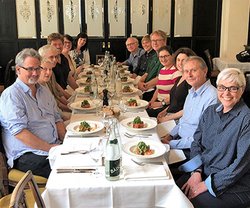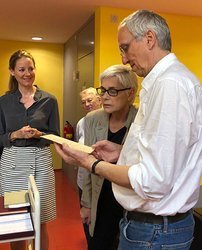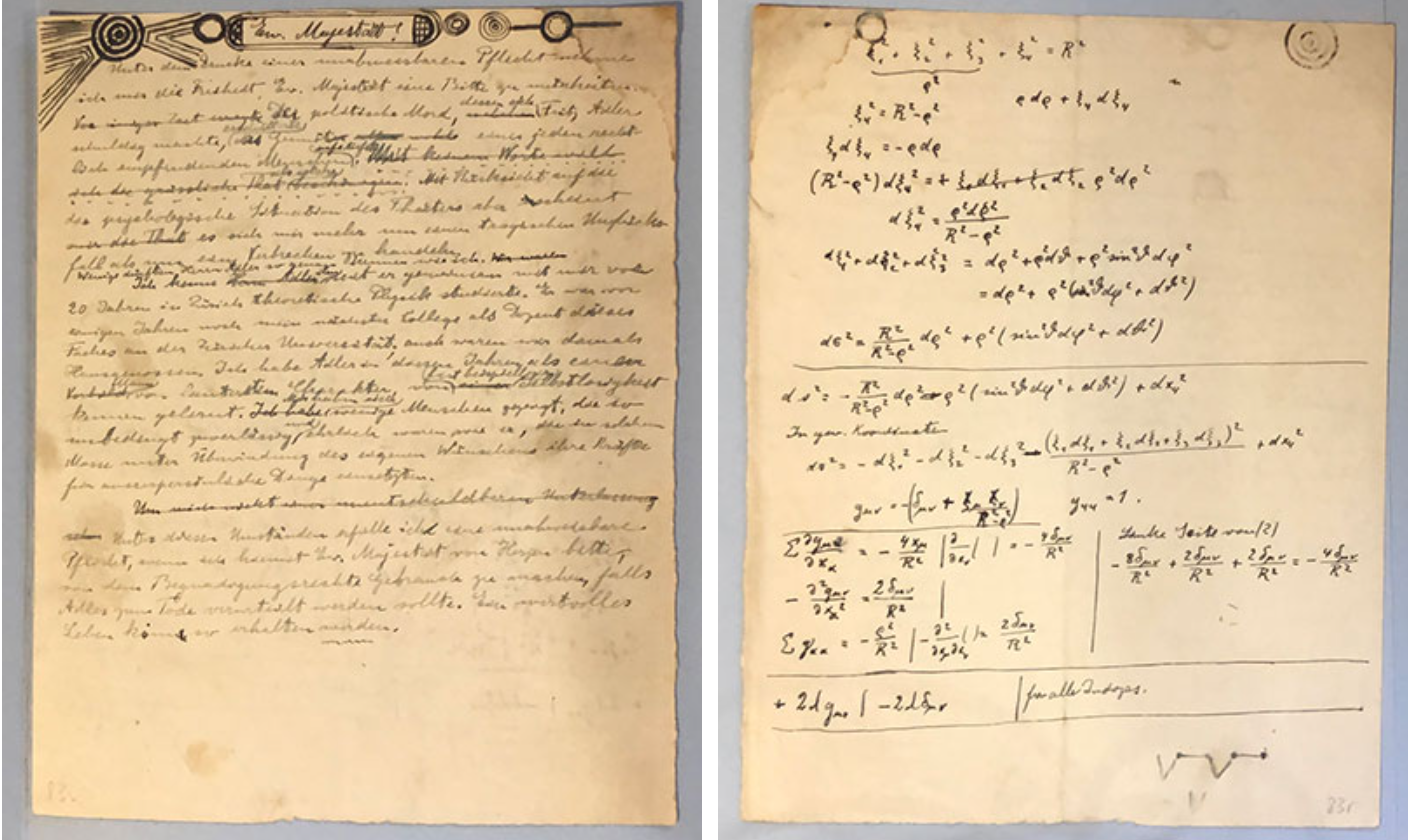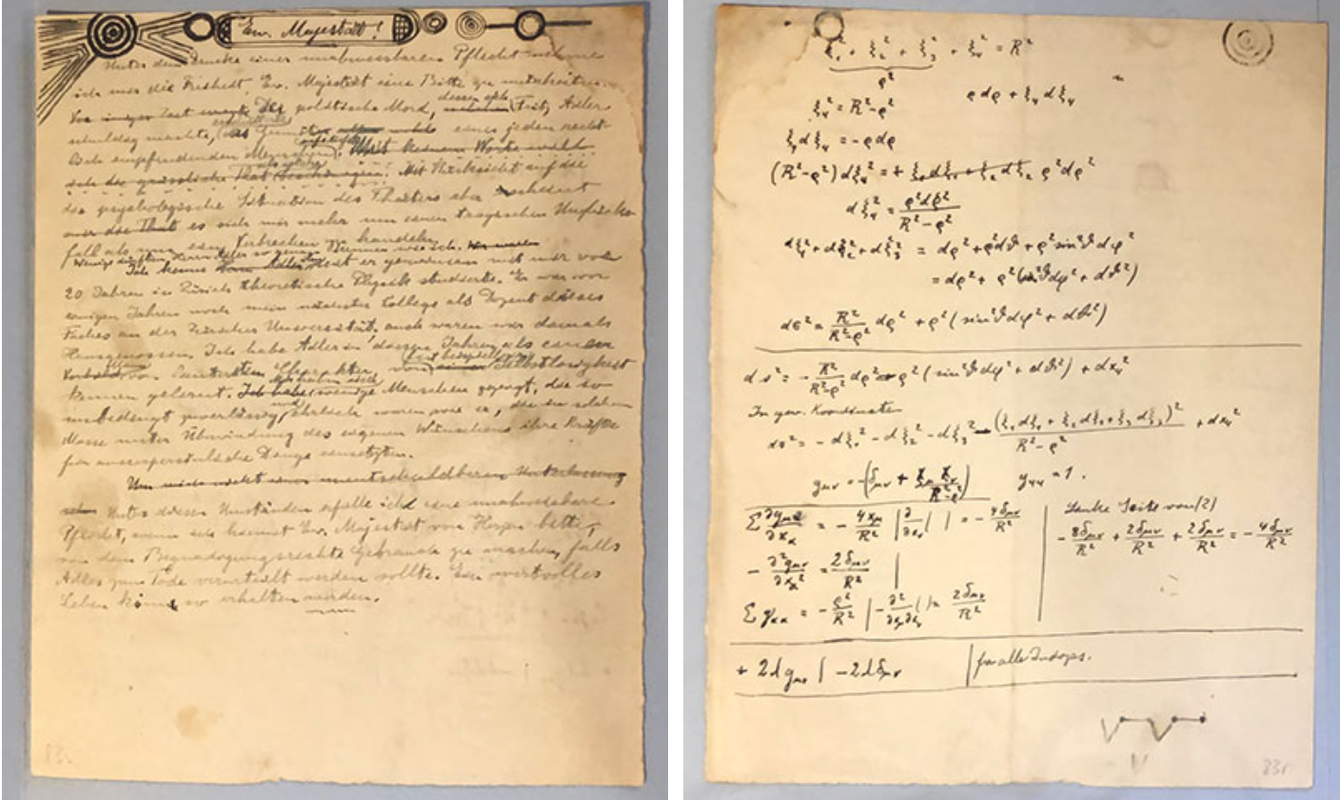
A core group of the EPP works year-round in Pasadena, while other editors, researchers and contributors work from abroad with periodic visits to our Caltech offices. Every other year, project colleagues gather in one location for a multi-day retreat. This summer we met in Berlin, Germany. We collaborate across many time zones on books that take several years to complete from the earliest stages of research through final publication. Meeting all together, biannually is a great way to strengthen ties, hash out ideas, prioritize and plan details, and enjoy extra curricular activities. Day one, we gathered at Restaurant Grosz—named for the Dadaist artist, George Grosz. The location, steeped in history, was a gorgeous setting for a full day of meetings.

Our second day we met colleagues in the neighborhood of Dahlem at the Max Planck Institute for the History of Science. Esther Chen, Head of Library, led us on a tour and showed us materials from the special collections. One item editors examined was an Einstein draft written circa March 1917. The draft is of a plea made by Einstein to Emperor Karl I on behalf of Friedrich Adler (1879–1960), secretary of the Austrian Social Democratic Party, who assassinated Austrian Prime Minister Count Karl von Stürgkh on 21 December 1916. Adler was in detention, awaiting trial, and expecting the death penalty. For an English translation of the letter see Volume 8, Document 300a: To Emperor Karl I in the Collected Papers of Albert Einstein online.
Our editors, deeply familiar with Einstein's writings and diagrams, were intrigued by the doodles at the top of the draft. Some were traced over to such a degree that the ink bled through the page. The quality of the graphics, especially the perfectness of the spheres, struck them as unusual. Taking a brief second look at the calculations on the verso, Dennis Lehmkuhl noted that they involve spherical coordinates, typically used to describe heavenly bodies like planets or the Sun, and their gravitational fields. The doodling around the salutation "Your Majesty" highlights the greeting with decorative line work. The drawings could well be schematic allusions to heavenly bodies. Perhaps, the drawings are a witty visual nod to the concept of the king as a majestic being, god like. What is more god-like than the power to decide a person's fate? On the other hand, the editors surmised that the doodles might not have been drawn by Einstein at all. Another puzzle to solve.
Click here for the Max Planck Institute's library catalogue information on the draft discussed in this post.


